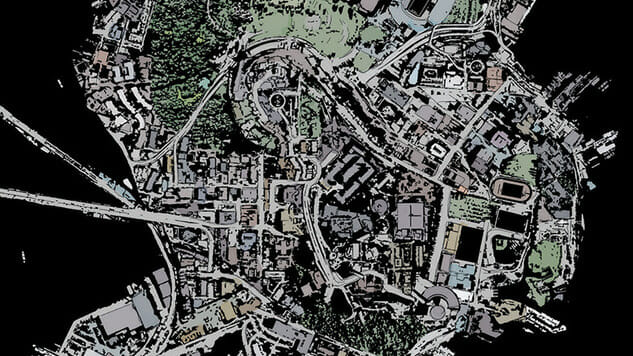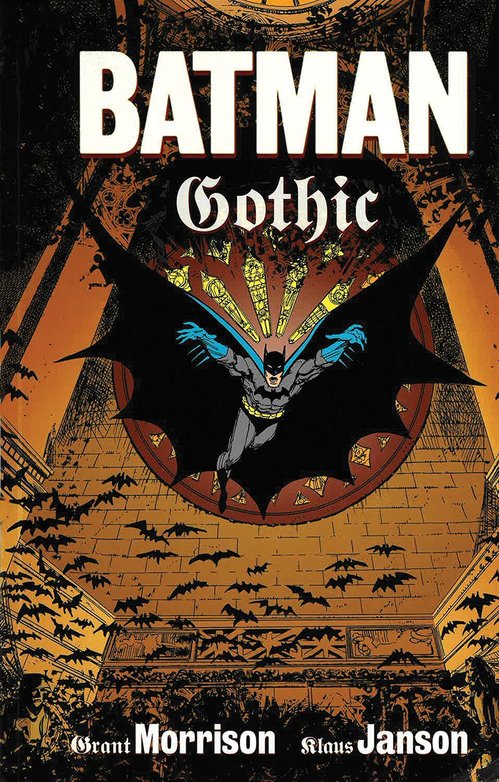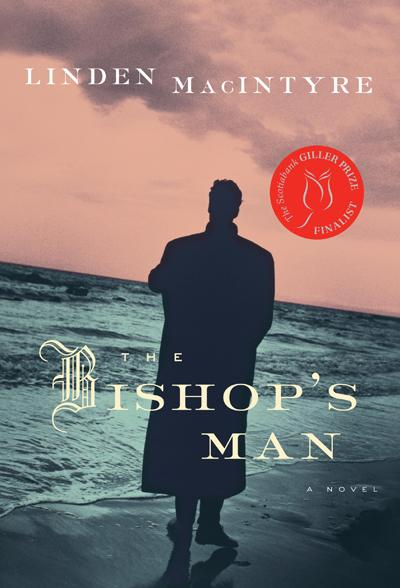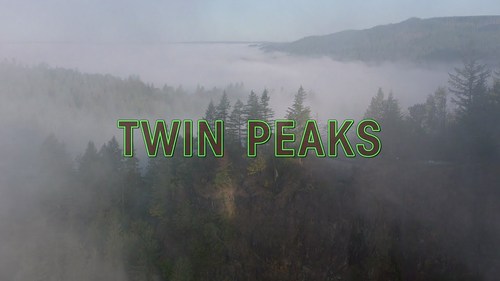Jeff Lemire Takes Us on a Tour of Gideon Falls
The Prolific Writer Breaks Down the Influences Behind his Hit Image Comics Horror Series
Main Art by Andrea Sorrentino & Dave Stewart
 Gideon Falls is one of 2018’s most frightening delights: a dual narrative set between the city and the countryside that explores the urban legend of the Black Barn, a structure that appears throughout history to foretell death and madness. Co-creators Jeff Lemire and Andrea Sorrentino tap into the mounting dread and heard-it-from-a-friend-of-a-friend compulsion of creepypasta stories, with the much more careful hand of experienced storytellers bringing it all to shadow-drenched life. Gideon Falls #6 wrapped up the first arc by actually inviting readers into the Black Barn—a discomforting experience that has to be read to be believed. This week, the series returns with the first part of “Original Sins,” a new story arc that delves deeper into the mysteries of the ominous structure and the protagonists drawn to it. Also available this week, in plenty of time for Halloween reading, is the first trade paperback, collecting issues #1 through #6. With so much Gideon Falls goodness hitting shelves this Wednesday, we invited Lemire to break down a few of the main references and inspirations behind the series.
Gideon Falls is one of 2018’s most frightening delights: a dual narrative set between the city and the countryside that explores the urban legend of the Black Barn, a structure that appears throughout history to foretell death and madness. Co-creators Jeff Lemire and Andrea Sorrentino tap into the mounting dread and heard-it-from-a-friend-of-a-friend compulsion of creepypasta stories, with the much more careful hand of experienced storytellers bringing it all to shadow-drenched life. Gideon Falls #6 wrapped up the first arc by actually inviting readers into the Black Barn—a discomforting experience that has to be read to be believed. This week, the series returns with the first part of “Original Sins,” a new story arc that delves deeper into the mysteries of the ominous structure and the protagonists drawn to it. Also available this week, in plenty of time for Halloween reading, is the first trade paperback, collecting issues #1 through #6. With so much Gideon Falls goodness hitting shelves this Wednesday, we invited Lemire to break down a few of the main references and inspirations behind the series.
![]()
Jeff Lemire on the Inspirations Behind Gideon Falls:
“What’s He Building in There?” by Tom Waits
The great Tom Waits’ album, Mule Variations, came in 1999. I was just on the verge of turning my full attention to comics then, and this album was always playing. One song in particular—the spoken word piece “What’s He Building In There?”—really got my imagination firing. With lyrics like these…
Now what’s that sound from underneath the door?
He’s pounding nails into a hardwood floor
And I swear to God I heard someone moaning low
And I keep seeing the blue light of a TV show
He has a router and a table saw
And you won’t believe what Mr. Sticha saw
There’s poison underneath the sink, of course
There’s also enough formaldehyde to choke a horse
What’s he building in there?
What the hell is he building in there?
…this song really struck a chord. The idea of the outsider hiding behind closed doors and working away on some secret, possibly nefarious project had to have been an influence on the creation of Norton and his world.
![]()
Pi, Written & Directed by Darren Aronofsky
As I have said in the past, the character of Norton was first conceived for a short film I made back in film school. I was walking around the city and something about seeing all the piles of trash in alleys, etc. triggered this idea of a guy obsessed with hunting for secrets and conspiracies in the city’s trash, thus I wrote and shot a short film with the prototype for Norton.


